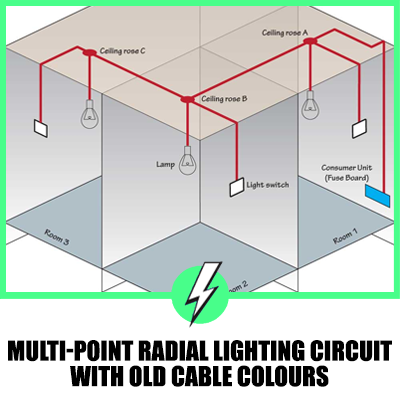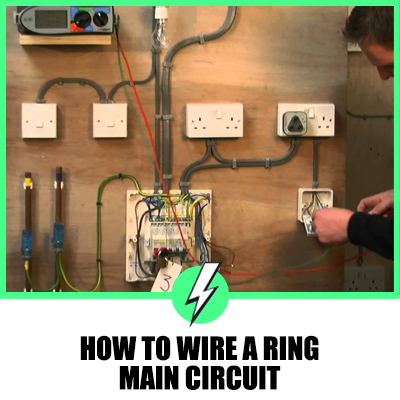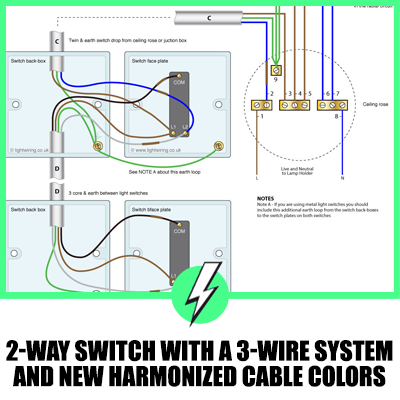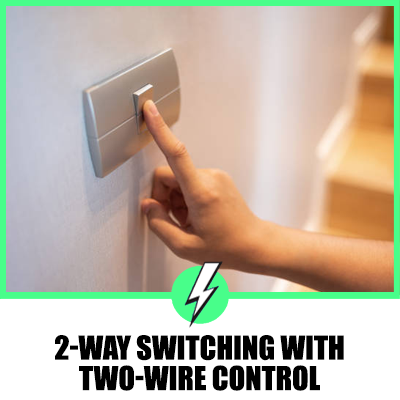Old Multi-Point Radial Lighting Diagram Using Junction Boxes
Eager to unravel the mysteries of the multi-point radial lighting circuit as it once was, with its old cable colours?
This classic electrical wiring method was once the backbone of many UK buildings, facilitating the flow of power to numerous lighting points from a single circuit.
As wiring regulations evolved, so did the colour codes, but the essence of the multi-point radial circuit’s design and its foundational role in electrical installations remain invaluable.
This article will guide you through the old cable colours and the architectural logic of the multi-point radial lighting circuit, providing a glimpse into the past practices of electrical wiring.
Well, we’ll be going over:
- What constituted the multi-point radial lighting circuit with its old cable colours, and how was it structured?
- What significance did the old cable colours hold in the circuit’s configuration?
- How does understanding the old cable colours and circuit design benefit us today, despite the shift to new standards?
Embarking on this journey will not only deepen your appreciation for the historical aspects of electrical wiring but also highlight the importance of adapting to new standards for safety and efficiency.
Let’s illuminate the past to better understand the present!
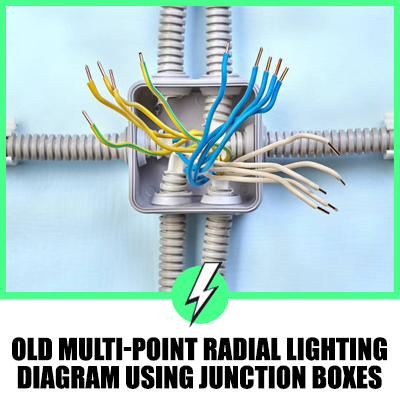
Contents
Overview of the Multi-Point Radial Lighting Circuit
The multi-point radial lighting circuit with old cable colours was designed to supply power to various lighting fixtures from a central source.
It featured a circuit arrangement where lighting points were connected in a radial manner, branching off directly from the main circuit cable.
This configuration facilitated the distribution of electricity to different lighting points throughout a building or room.
Fig 1 shows what is referred to as a radial circuit (sometimes called a ‘loop-in’ or ‘multi-point radial lighting circuit’). which uses junction boxes instead of ceiling roses. You may find this wiring arrangement in older properties.
N.B. The diagrams below shows the old cable colours as you are unlikely to find this approach taken in a modern property which would use the new ‘harmonised’ cable colours.
If your lighting circuit has all the cables terminate in ceiling roses rather than junction boxes, please refer to one of the following instead:
Multi-point radial lighting circuit with new cable colours (harmonised) or
Multi-point radial lighting circuit (old cable colours)

Fig 1: Multi-point radial lighting circuit using junction boxes
The live feed from the Consumer unit (fuse board, shown in blue in Fig 1) feeds into the first junction box (junction box A, Fig 1).
This would be cable A in the diagram below (Fig 2) which shows how the junction box is terminated.
This live feed now loops back out of the junction box (cable B, Fig 2) and feeds power to the next ceiling light in the radial circuit (junction box B, Fig 1).
This repeats for each light in the circuit until we reach the last light.
Once we reach the last light, you can see that there is only The feed from junction box B (Fig 1),
This is Cable A in the diagram below (Fig 3), which shows how the last junction box in the circuit is terminated.

Fig 2: Junction box wiring for looped radial lighting circuit
Notice that each of the three junction boxes in Fig 1 has, in addition to the power feeds, an additional cable that feeds down to the light switches (the switch wire).
This is Cable C in fig 2 & Fig 3. Cable D (Fig 2 and Fig 3) is the feed to the light fitting.

Fig 3: Junction box termination for the end of a radial lighting circuit
Key Components and Connections
- Consumer Unit: The circuit originated from the consumer unit, where the lighting circuit was connected to a dedicated circuit breaker or fuse for protection.
- Circuit Cable: The circuit cable, typically a three-core cable with specific colours for each core, carried the electrical supply from the consumer unit to the lighting points.
- Live: Red
- Neutral: Black
- Earth: Green/Yellow
- Lighting Points: Individual cables connected each lighting point to the circuit cable, enabling power distribution to various fixtures.
- Switches: Switches were installed at each lighting point to control the on/off operation of the connected fixtures.
Advantages of the Multi-Point Radial Lighting Circuit
- Simplicity and Cost-effectiveness: The multi-point radial lighting circuit with old cable colours was relatively straightforward to install and was a cost-effective option compared to alternative wiring configurations.
- Flexibility: This circuit layout allowed for the addition or removal of lighting points without impacting the rest of the circuit, offering flexibility in lighting design and future modifications.
- Efficient Power Distribution: The radial layout minimized voltage drops, ensuring consistent and reliable lighting performance across all connected fixtures.
Transition to New Cable Colours
In recent years, the UK has transitioned to new cable colours as part of updated wiring regulations.
The previous red (live), black (neutral), and green/yellow (earth) cable colours have been replaced by a harmonized set of colours:
- Live: Brown
- Neutral: Blue
- Earth: Green and yellow striped
It is essential to note that the transition to new cable colours improves safety and conformity in electrical installations, enhancing consistency and standardization across the industry.
Conclusion:
The multi-point radial lighting circuit with old cable colours was a widely used electrical wiring configuration in the UK.
By understanding its key components, connections, and the old cable colours used, individuals can gain insights into historical electrical installations.
Although the wiring regulations have since been updated, it is important to recognize the evolution of electrical systems and remain compliant with the current standards when installing or modifying lighting circuits.
The multi-point radial lighting circuit, with its simplicity, flexibility, and efficient power distribution, served as a reliable choice for lighting installations in residential and commercial settings during its time.

